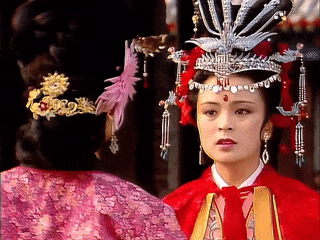In the more than two thousand years of feudal society in China, the traditional marriage system was characterized by one husband with one wife and multiple concubines. For the majority of common women in ancient times, marriage offered them two starkly different paths: to be the wife of a common man or a concubine in a wealthy household. After all, wealthy families were always in the minority.
Entering Marriage: Different Standards and Complex Rites
Marriage in ancient China was an extremely important and serious matter. First and foremost, there was the requirement of matching family backgrounds. “Good families do not marry bad ones,” meaning that those with a reputable family background would not marry those from lowly occupations or who were considered of low status. The process was complicated, involving six traditional rites: sending a matchmaker, asking for the name, offering gifts, and more. By the Song Dynasty, these rites were simplified into just a few steps, including asking for the name, giving gifts, and picking an auspicious date for the wedding.
Once the wedding date was set, the ceremony was held, and the family would receive the bride officially. This act was not just about love or tradition, but also a reflection of societal order. As the saying goes, “Marriage establishes family ties, making the relationship between parents, children, and rulers clear.” In a time where social hierarchy was crucial, the wedding was viewed as the foundation of social harmony.
However, becoming a wife was an exclusive privilege. Concubines were not married in the same manner but were instead “taken” as concubines, often of lower status, and had fewer ceremonial rituals. Concubines could be bought, exchanged, or even given as gifts—business transactions disguised as relationships.

The Status Divide: A Clear Distinction
The differences between wives and concubines didn’t end at the wedding ceremony. A wife in ancient China was the “main wife” (正室), residing in the main house and enjoying significant respect, while concubines were relegated to the side rooms, known as “side chambers.” During meals or gatherings, concubines were required to stand and wait on the family, never allowed to sit at the same table as the wife.
Even in the Qing Dynasty, this distinction persisted. For example, the powerful court official Yin Jishan’s mother, a concubine, was never allowed to dine with the wife in the family. It wasn’t until Emperor Yongzheng intervened and promoted her that she received recognition. In contrast, the wife had the privilege of participating in family rituals and could be buried in the family’s ancestral tomb—a privilege denied to concubines.
This social divide was not merely symbolic. Wives had clear social advantages, including having their names recorded in family genealogies and being involved in family memorial services, whereas concubines had none of these privileges. The consequences of this societal structure can even be seen in literature, such as in Dream of the Red Chamber, where the concubine’s death leads to a burial outside the family tomb, reflecting her lowly status.
The Complex Relationships: Coexisting Yet Divided
While some stories portray harmonious relationships between wives and concubines, such as the famous case of Wang Anshi’s wife, who voluntarily acquired a concubine for her husband, this was far from typical. Most wives, upon their husbands taking concubines, felt threatened and jealous, fearing the loss of their position in the household.
In fact, the legal system backed these power dynamics. In the Song Dynasty, it was even stipulated that if a wife was injured by her husband, the penalty was less severe than if a concubine was harmed. In cases where a wife killed a concubine, it was often seen as a lesser offense than if the roles were reversed.
Obligations: Wives Held Higher Expectations
Wives, as the formal partners, also had far more responsibilities. They were not only expected to be loyal and submissive to their husbands but also to take on family duties, such as participating in ancestor worship and caring for the family’s reputation. Concubines, however, had fewer expectations and were generally not bound to the same level of commitment.
Interestingly, the concept of “wife-sharing” was socially accepted. If a husband’s position required him to marry a concubine, the wife had little choice but to accept it. However, in contrast to this, the concubine’s position was extremely precarious. Concubines had no legal rights over their children, no claim to the family estate, and their status was solely at the mercy of the husband’s affection.
A Grim Fate: Little Control Over Destiny
Whether as a wife or a concubine, women in ancient China had little control over their own destinies. Wives, despite their legal protections, could still be divorced if they committed a grave mistake, such as failing to bear children. On the other hand, concubines were disposable—if they no longer pleased their husbands, they could be discarded without hesitation.
One of the most tragic customs was the practice of “selling” a wife to another man to settle debts. Known as “loaning a wife,” this was a legal practice in ancient China that allowed a man to offer his wife as collateral for a debt. Such practices were in direct contradiction to the moral values of lifelong marital commitment but continued throughout Chinese history.
Conclusion: A Lasting Cultural Impact
The marriage system in ancient China reflects the broader patriarchal structures of society. Despite the “official” status of the wife, both wives and concubines were ultimately at the mercy of the men who controlled their lives. This unequal relationship had deep cultural consequences, influencing Chinese literature, arts, and family structures for centuries. The tension between wives and concubines continues to resonate in modern Chinese culture, as it underscores the ongoing struggles over gender equality and women’s rights.
In modern times, the legacy of these gender dynamics has shaped societal attitudes towards marriage, family, and women’s roles. Understanding this historical context provides valuable insight into the evolution of Chinese culture and the enduring impacts of feudal traditions.

No comments yet.